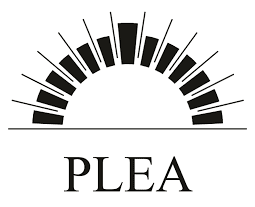The study examines the effects of adding vegetation to a Tel Aviv neighbourhood on the microclimate, and subsequently on electricity consumption for heating and cooling. Computer simulation was employed to generate modified weather files that account for urban effects in different building configurations. These files were then used as inputs for detailed computer simulation of building energy performance. Elevated night-time temperatures in the urban location increase summer cooling relative to the reference rural site, but reduce winter heating, resulting in a net decrease of 2-7% in overall electricity use for heating and cooling (depending on building characteristics). The reduction in the potential for cooling by night ventilation will increase the prevalence of air conditioning use and make buildings more vulnerable to potential loss of electric power during episodes of extreme heat. Implementing a strategy of extensive planting, so that a green surface fraction of 0.5 is obtained, results in a mean annual temperature reduction of about 0.3 °C and an energy saving relative to the current condition of about 2-3%.
The Effect of Increasing Vegetation Cover on Energy Demand for Heating and Cooling Buildings in a Dense Mediterranean City
This entry was posted in Conference Paper. Bookmark the permalink.

